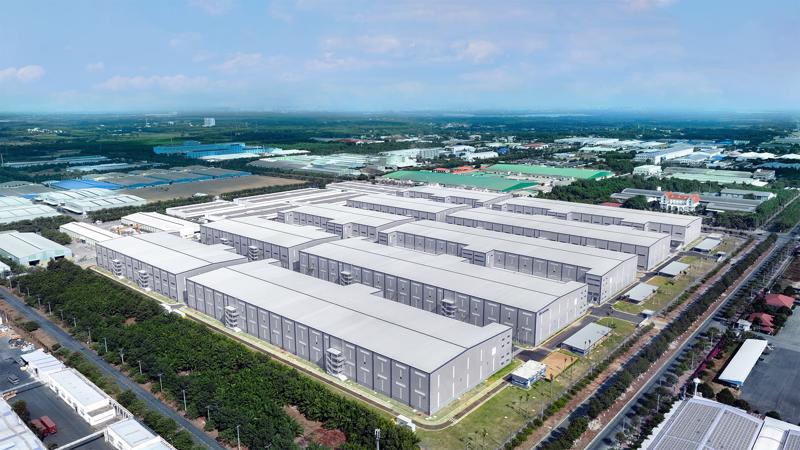The global semiconductor industry provides essential components for modern electronics, including microprocessors, memory, and data storage devices. With rising demand for electronic devices and technological advancement, the global semiconductor market is forecast to reach $600 billion by 2025, for growth of 14 per cent since 2023, according to the Semiconductor Industry Association (SIA).
Vietnam’s Semiconductor Sector - An Investment Hotspot
Vietnam is already home to notable semiconductor players including Samsung, Qualcomm, Infineon, and Amkor. This has supported the construction and expansion of manufacturing and assembly operations worth billions of dollars. By the end of 2024, Vietnam’s semiconductor industry is forecast to surpass $6.16 billion, establishing the country as a key production hub for global semiconductor companies.
The semiconductor industry is increasingly attractive in the wake of global changes. The Covid-19 pandemic heightened the demand for semiconductors due to increased reliance on electronic devices during and after social distancing.
Vietnam is well placed to capture this demand. Hanoi has already received investment from Samsung for its largest research and development (R&D) center in Southeast Asia. Several semiconductor companies from the Netherlands have also invested in the country. BE Semiconductor Industries N.V. (Besi) invested VND115 billion ($4.9 million) in the Ho Chi Minh City High-Tech Park to produce semiconductors, with operations set to begin in the first quarter of 2025.
Vietnam has significant potential to be a semiconductor hub as it enjoys a strategic position in Southeast Asia with easy access to major regional markets. It also has favorable natural conditions and abundant rare earth resources, which are crucial materials in semiconductor production.
Vietnam’s political landscape is also relatively stable, and the Vietnamese Government actively promotes the semiconductor industry with attractive tax incentives and investment support policies.
The investment demand for semiconductor manufacturing and assembly has driven an increase in the search for industrial land and facilities that meet the infrastructure and service requirements of the industry. Basic requirements include stable electricity supply, high-speed internet, and effective water systems, thereby necessitating improved facility quality and systems by investors in Vietnam.
The Northern Economic Region will continue to be a hotspot for industrial real estate. Northern provinces are home to companies operating in high-value industries, including computers, electronics, and electrical products. Therefore, developing semiconductor investment will boost industrial real estate growth in the north.
To attract capital into the semiconductor industry and industrial real estate, localities and enterprises must improve policy frameworks, infrastructure, and workforce to meet the stringent requirements of this specialized industry.
Vietnam’s infrastructure is still not fully developed, however, especially its power supply. During peak months, demand periodically outweighs supply, which could challenge a power-hungry industry like semiconductor manufacturing.
How Industrial Real Estate Benefits from Semiconductor Growth
To meet the demand from the semiconductor industry, Vietnam needs to accelerate large-scale energy infrastructure projects. The Prime Minister has approved the National Power Development Plan for 2021 to 2030 with a vision to 2050 (PDP8), prioritizing investment projects and aiming for sustainable energy development. Vietnam focuses on developing high-tech zones, particularly the National Innovation Center (NIC), to set the groundwork for foreign corporations to invest and manufacture in Vietnam.
Though Vietnam has a large working-age population of 52.4 million, there is a lack of highly-skilled engineers, who are necessary for developing the semiconductor industry. The lack of quality human resources could limit major investments. Therefore, solving the workforce challenge would enhance Vietnam’s position as an investment destination, attracting major technology corporations to invest in research, development, and production in the country.
The Ministry of Planning and Investment (MPI) emphasizes developing Vietnam’s labor capacity to increase the country’s competitiveness in semiconductor manufacturing. Semiconductor manufacturing comprises two main areas: R&D and fabrication. Both processes have high labor demands. The government has tasked the MPI to collaborate with the Ministry of Information and Communications, the Ministry of Education and Training, and relevant agencies to study and develop a human resources development proposal for the semiconductor industry, aiming to train and develop 50,000 workers for the sector by 2030.
The government and enterprises must cooperate closely to leverage existing potential, improve the investment environment, enhance infrastructure quality, and train the workforce, thereby creating favorable conditions for the sustainable development of the semiconductor industry and industrial real estate in Vietnam. With such efforts, Vietnam can become a significant global semiconductor manufacturing hub, supporting the country’s economic development and enhancing its position in the global supply chain.
(*) Mr. Thomas Rooney is Senior Manager of Industrial Services at Savills Hanoi.









 Google translate
Google translate